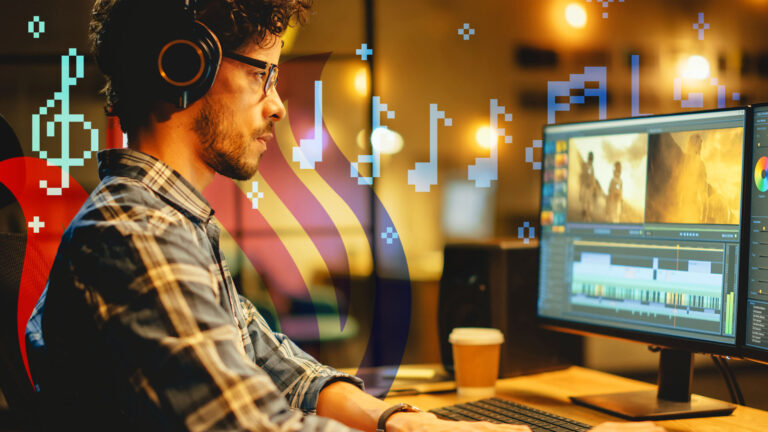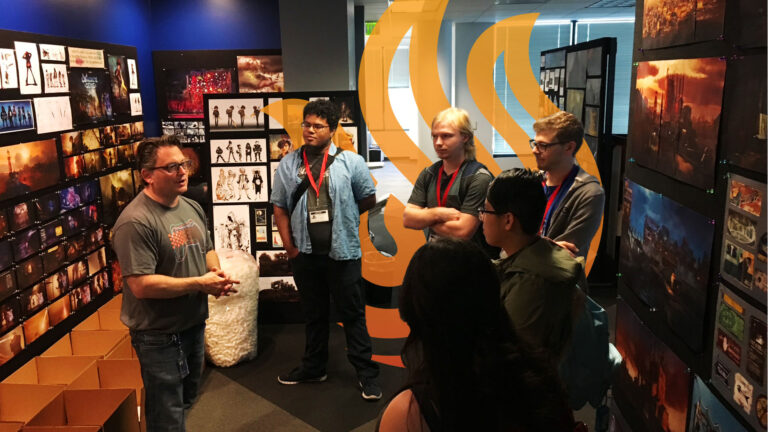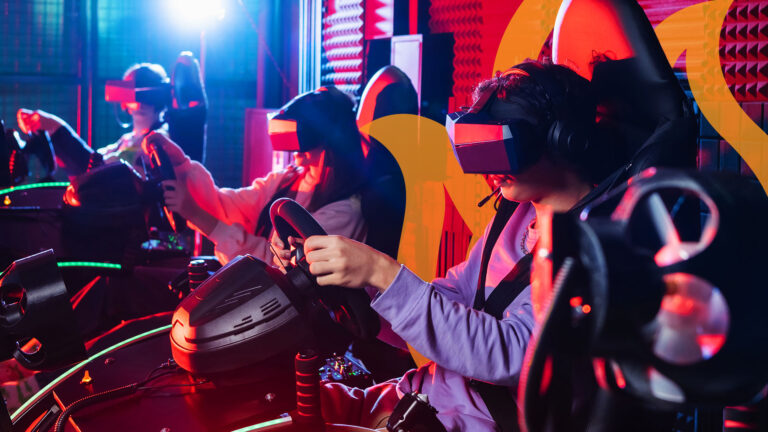There are many ways to express oneself with computer-generated images, and the field of 3D modeling and 3D animation is one of them. 3D modeling and 3D animation can achieve effects that may not be possible or cost-effective in real life. Live-action movies can use a combination of digital compositing and 3D animation to enable characters to achieve normally impossible feats like those achieved in The Matrix, The Lion King and Avatar. Video Games also use 3D modeling and 3D animation to create engrossing interactive experiences. Furthermore, 3D models and 3d animation can create anything from live-action effects, interactive stories, cartoons, and even museum exhibits. As growing technology allows people to enjoy the thrill of creating 3D animations and 3D models on their home computers, more and more people dream of working in the entertainment industry.

Planning 3D Modeling and 3D Animation
Creating a piece of 3D animation is still a multi-faceted process that changes depending on the purpose of the animation. Setting up an animation pipeline for a video game or other interactive 3D experience is going to be different for film animation. Having a good script, design and visual reference is essential before creating any assets. Storyboards serve as a tool for shot design and story pacing, and as a reference for animation that occurs later in the process.
An animatic is a crude animation made of single frames that can give animators an idea of the specific timing of a scene. Knowing what effects are going to be needed is a key component in picking what technology to use when creating digital art. Some software platforms may not be capable of creating certain effects efficiently. In some cases, it is best to use the strengths of computer graphics and create stylized representations of real-life rather than imitate it outright. 3D animation has unlimited potential to create productions that are either whimsical or more serious and mature in tone. 3D animation has always been a medium capable of moving and inspiring audiences.
Digital compositing is a tool used to mix and combine dozens and sometimes even hundreds of elements and layers to produce a single picture. Images are not created in one single pass but are broken into elements, and all of these elements are composited to create an image. All blockbuster movies use this technique to combine analog film and animation.
There are some practices that apply to both 3D animation and game design. Simpler is almost always better, and in the case of 3D animation, this principle applies when considering what assets are needed for production. Elements that are out of sight of the camera in all shots can be built with less detail. In the case of a video game, the artist must be sure that a 3D model looks good from all perspectives, while also considering asset optimization. This is because the person playing the game can move around inside the animation and therefore see objects around them from any perspective. In film, only the director decides on the camera/viewing angle. Producers of 3D animation use a “render farm,” which is basically a data center network made up of dozens of computers (or sometimes thousands) that process the images with the combined power of the linked units.
Depending on the amount of simulation performed in a single frame of pre-rendered animation, it can take anywhere from minutes to days to create. The Pixar animation Finding Nemo took almost a full month to render the 100-minute movie and they would not have been able to do this without good direction. Spending an entire month or year on a project just to restart due to poor planning is something that can sink a production.
3D Modeling
There are different ways to go about creating a 3D model. A new way of 3D modeling that is becoming popular is photogrammetry or the process of creating 3D models from photographs. Photographs create realistic terrain and are used to scan real landmarks for users to explore digitally. If one lacks the resources to invest in point-scanning equipment, programmers have hacked Microsoft Kinect units to scan objects and even do rudimentary motion capture.
Another method of 3D modeling is the sculpting method. Programs like Zbrush allow an artist to make a 3D model in a similar fashion to shaping a ball of clay. This method can allow for a more tactile experience and create assets that have a presence in the scene they belong in. Unity and Unreal Engine are programs that contain a full suite of programming and animation tools designed to create video games.
3D Modeling & Texturing
Texturing is the process of applying an image onto a 3D model. 3D scanning creates textures and simulates realistic material properties. Sculpting programs like Substance Painter allow modelers to paint textures onto a model as one would do with a brush.
Rigging in 3D Modeling
“Rigging” is when an artist sets up the 3D model for motion by defining the joints of that model with a sort of puppet skeleton. In video games, 3D artists employ a technique called inverse kinematics to simulate a character interacting with the environment in a realistic way. A good example of this effect is increasing the bend of the knees of a character as they walk up a steep incline. 3D animation can be created by hand. Motion-capture technology is a quick way to get convincing human animation. Modern high budget productions even use facial scanning to project an actors’ emotions and gestures onto a 3D model. Models and assets that are not humanoid will require different rigging to properly animate them. Simulation can do the work for animation that is too complex or laborious to complete by hand (such as the movement of natural phenomena like water, fire, and smoke). Physics systems can calculate movement and the interaction of different objects, for example, a brick wall being knocked over or an object navigating an environment.
3D Model Rendering
Rendering is the process of drawing the final result of many calculations that simulate the lighting of a model or scene. In the same way that there are many ways to create a 3D model there are also varying ways to shade them. “Shaders” compute lighting and other effects related to the graphics. Shaders can compute lighting and shadow effects on a model but also are capable of changing the entire appearance of a scene. Phong shading is a method that calculates the specular highlights of a surface in order to make it look shiny. Tesselation is a process that can take the heightmap of a material and create new geometry on the fly.
The most realistic form of rendering is called “Ray-Tracing.” It works by simulating the specific and realistic path that light takes as it bounces around objects. Rendering processes for video games can be a lot different than for pre-rendered films. While it is becoming possible to do ray-tracing in real-time with advances in technology, it is still not widely adopted, so many game artists employ resource-saving approximations. A texture artist might employ a “normal” map which represents a heightmap of a surface for calculating smaller surface shadows. Some artists might find it better to paint the background objects first and then paint the foreground objects over them afterward; sometimes the reverse is more practical, but it all depends on the desired effects.
Conclusion
Creating a finished product in computer graphics can be a great feeling. Seeing one’s dreams come to life is an extremely rewarding career option. Edwin Catmull invented computer graphics software because he felt incapable of drawing things by hand. Computer graphics allow an artist to design things that are beyond the possibility of reality. Even live-action shots have used computer imagery to make impossible locations, such as the many mind-boggling environments in Christopher Nolan’s movie Inception. There is almost no limit to what one can create with 3D Modeling and 3D Animation, and who knows what the future will hold.
Did learning about 3D Modeling and 3D Animation interest you? You can experience what it’s like being in the full animation and VFX pipeline in our Digital Art & Animation program. Our Digital Art & Animation courses have been designed with input from industry connections, so University of Silicon Valley students learn the skills studios are looking for.
University of Silicon Valley’s 3D Modeling concentration has been designed to ensure Digital Art & Animation degree program students get the most relevant training and access to modern industry tools taught by industry professionals. You’ll learn professional workflows and create your own 3D models for films, video games and more.
Start your animation career today and learn what it takes to become a 3D animator. The 3D Animation concentration delivers premium instruction by skilled industry mentors. You’ll master the fundamentals of animation, learn character rigging, and so much more.
University of Silicon Valley is uniquely poised to offer a meaningful and valuable education for 21st-century students. We believe in an education that directly correlates with the work you’ll be doing after you graduate. Interested in learning more? Contact Us today. For important regulatory information, visit our Disclosures Page at usv.edu/disclosures.


